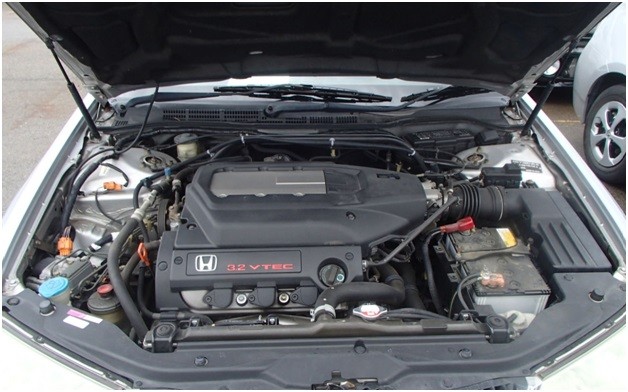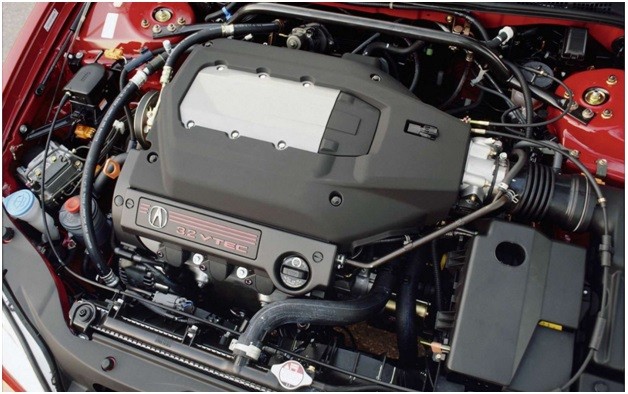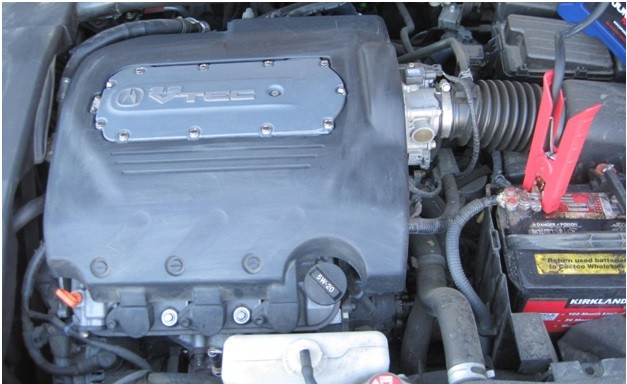
Honda J32A engine
Content
In 1998, engineers at the American division of Honda developed a new 3.2-liter gasoline engine, labeled J32A. When it was created, the J30 V6 power unit with a block height of 235 mm was taken as the basis, in which the cylinder diameter was increased to 89 mm. The dimensions of the connecting rods were left the same (162 mm), as was the compression height of the pistons (30 mm). By changing the size of the cylinders, the minders managed to reduce the weight of the engine and get an increase of 200 cm3 in volume.
The J6A 32-cylinder V-shaped BC engines of the J32A engine line (with four valves per cylinder) are characterized by the presence of two SOHC heads, with one camshaft in each. As in its predecessor, the J34A series of units was equipped with a VTEC system, but the diameter of the valves was increased (to 30 and XNUMX mm, intake and exhaust, respectively). Also used a two-stage intake and updated exhaust manifolds.
J32A modifications were installed on Honda cars until 2008, after which they were replaced by the J35 unit with a volume of 3.5 liters.
Modifications J32A
After a couple of improvements to the first J32A power plant, with an initial maximum power of up to 225 hp, the engineers were able to “squeeze” as much as 270 hp out of the engine.
The base model of the J32A engine under the index A1, with power up to 225 hp. and VTEC, which operates at 3500 rpm, was installed on the Inspire, Acura TL and Acura CL.
The J32A2 with up to 260 hp, improved cylinder head scavenging and more aggressive camshafts, sport exhaust and 4800 rpm VTEC was fitted to the Acura CL Type S and TL Type S.
An analogue of the J32A2, a unit under the index A3, with a power of 270 hp, with a cold intake and with an updated exhaust system, as well as with VTEC operating at 4700 rpm, is found on the Acura TL 3.
Engine numbers are located on the cylinder blocks on the right, under the oil filler neck.
The main characteristics of modifications J32A:
| Volume cm3 | 3206 |
|---|---|
| Power, hp | 225-270 |
| Max torque, Nm (kgm)/rpm | 293(29)/4700; 314(32)/3500; 323(33)/5000. |
| Fuel consumption, l / 100 km | 8.1-12.0 |
| A type | V6, SOHC, VTEC |
| D cylinder, mm | 89 |
| Max power, hp (kW)/r/min | 225(165)/5500; 260(191)/6100; 270(198)/6200. |
| Compression ratio | 9.8; 10.5; 11. |
| The piston stroke, mm | 86 |
| Models | Honda Inspire, Acura CL, Acura TL |
| Resource, outside. km | 300+ |
Advantages and problems of J32A1/2/3
On the technical side, the J32A is a complete analogue of the J30A, so their advantages and problems are also similar.
pros
- V-shaped business center;
- Two SOHC heads;
- VTEC.
Cons
- Floating revolutions.
Many J32 engines today are already at a decent age and have managed to wind hundreds of thousands of kilometers, so they may show other problems.
The cause of the floating rpm is usually either a dirty EGR valve or a throttle body that needs to be cleaned. Otherwise, the usual timely maintenance of the engine, refueling with high-quality gasoline and suitable oil, and the J32 series engines will not cause any particular trouble.
Tuning J32A
Almost all naturally aspirated engines of the "J" family are one of the best options for swapping or tuning.
Based on the J32A, you can assemble an excellent unit by taking, for example, the inlet from the J37A and putting an enlarged damper on it. Of course, a thorough porting of the cylinder head will significantly improve the power figures, but it may be easier for someone to put single-shaft heads from J35A3, and camshafts from J32A2, besides, they are considered one of the best for tuning J-engines. In addition, you will need tuned springs, valves and plates (for example, from Kovalchuk Motor Sport), as well as forward flow on a 63 mm pipe. All this will give more than 300 "horses" on the flywheel.
Even better performance can be achieved with the crankshaft and connecting rods from the J37A1, as well as pistons from the J35A8 engine.
There is an option to inflate into the factory engine and, with the right settings, get more than 400 hp, but then it is imperative to use forging.
Turbocharged J32 Type S
The project to turbocharge the V6 unit of the J32 line implies a mode of long-term loads at high speeds, so it is better to take the J32A2 from Type-S as a basis. The power reserve of this engine allows you to experiment and increase technical characteristics at times.
The block must be sleeved, low forged, the bolts and studs for the cylinder head and crankshaft are from ARP, the fuel regulator is for a good fuel pump, the connecting rod and main bearings are tuned, as well as the fuel rail with injectors.
It is worth considering that the price tag of pistons and connecting rods for a compression ratio of ~ 9 will be 50% more than for a 4-boiler engine.
After porting the heads, an equal-length manifold, FullRace exhaust, intercooler, high-temperature wastegates, blowoffs, piping, a pair of turbines (for example, Garrett GTX28), EGT K-Type sensors, and a Hondata Flashpro in the ECU are installed.
Conclusion
The J32 series was designed exclusively for expensive premium Honda cars, or top-end versions of the most popular models oriented to the US market (after all, Americans love such engines more than anyone else). However, over time, the engines of the “J” family with a volume of 3.2 liters have proven themselves throughout the world and the demand for them continues to this day, and this is not without reason.
From 1998 to 2003, no significant changes were made to the configuration of the J32 line of internal combustion engines, which serves as the best confirmation of the reliability of their duration of operation.

